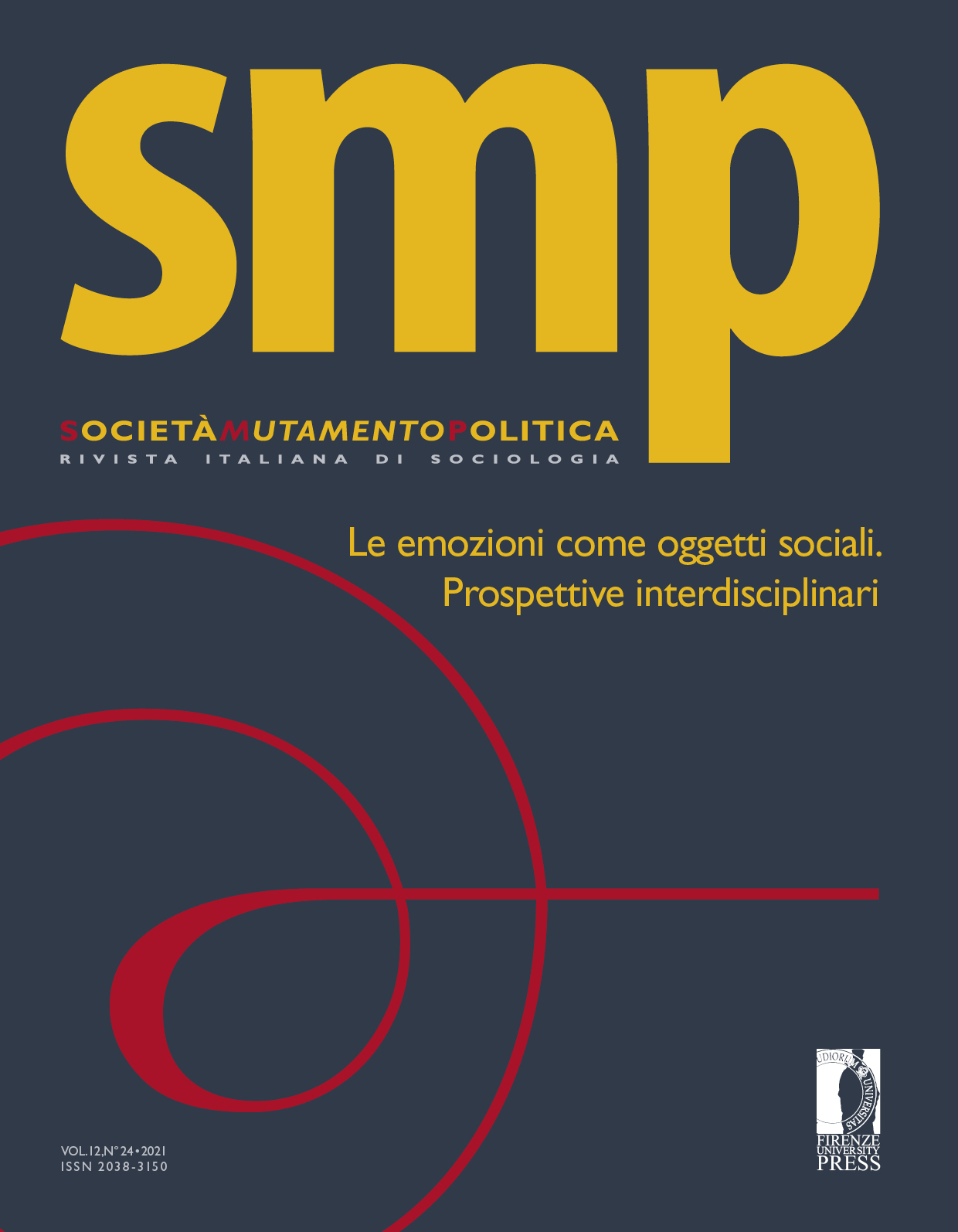Published 2021-11-16
Keywords
- Emotions,
- intersubjectivity,
- Mead,
- emotional consciousness,
- social act
How to Cite
Abstract
The aim of this paper is to show the peculiar role that George Herbert Mead’s theory can play in understanding the social character of the emotions, with particular reference to the non-dualistic and anti-reductionist connotation of human conduct. The essay starts from two philosophical antecedents that exemplarily frame the relationship between emotions, intersubjectivity and normativity. These are the theoretical options of David Hume and Adam Smith. The hypothesis underlying this contribution is that the reflection on the link between emotions, intersubjectivity and normativity initiated by these two philosophers finds a more complete formulation in sociological terms in Mead’s theory. Through the overall argumentation developed in the essay, an attempt will be made to show that in Mead – unlike Hume and Smith – moral consciousness is not discontinuous with respect to emotional consciousness, but that both represent phases of the same social process. The social character of the emotions is thus defined by reference to a common fabric of intersubjective character that binds together emotional consciousness and the more articulated dimensions of consciousness as phases of the same dynamic of human conduct.


